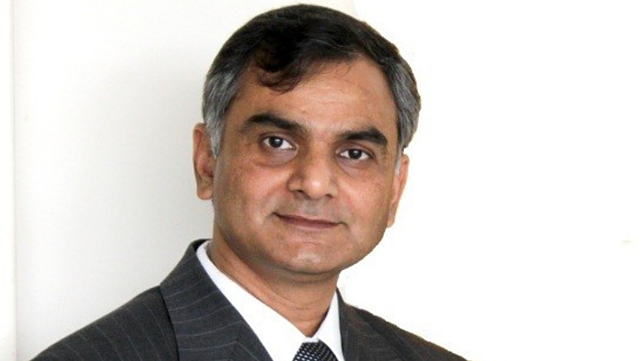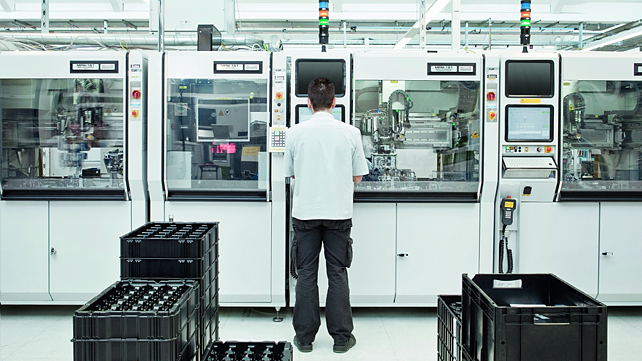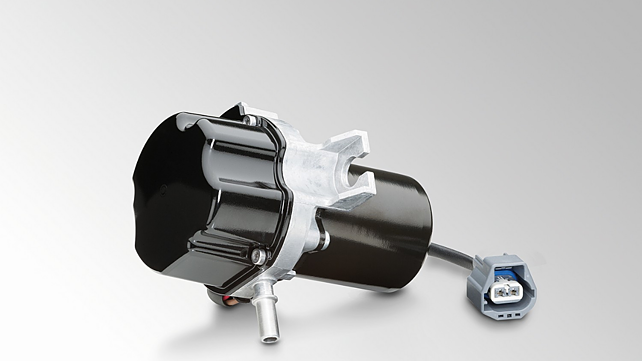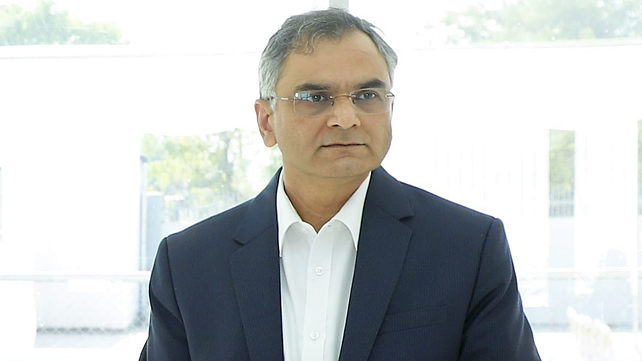
Dr Naveen Gautam is the Managing Director for Hella India Automotive and Hella eMobionics, and serves as an Executive Board Member for Business Division Electronics for Hella. His previous assignments include holding increasingly responsible positions in Daimler Chrysler in E/E Development and Vehicle Architecture groups in Auburn Hills USA and in Stuttgart Germany, faculty position at Rajasthan Technical University (Kota, India) and Adjunct faculty at Wayne State University (Detroit, USA) in department of Industrial Engineering.
------------
What’s your view on the current market scenario and how has it really impacted business for Hella in the country?
Globally, we all got impacted by this pandemic. But there are certain aspects of this pandemic, which have subsequently triggered other phenomena that have impacted some industries quite heavily.
In the automotive industry, demand was stagnant. On the other hand, we saw a heavy rush towards purchasing consumer electronics, especially those that helped people connect and communicate.
The semiconductor industry saw the slowdown in the automotive sector and diverted their demand at the wafer and foundry level to the consumer side. The automotive industry as a whole did not recognise this phenomena and its implication in a big way. The demand in the automotive market for semiconductors has significantly increased, but there is an acute shortage of common ICs and microcontrollers driven by the semiconductor industry. And as a result, almost all global and local OEMs are heavily impacted.
We are at the mercy of semiconductor suppliers. How many vehicles an OEM can produce is largely governed by their microcontroller and IC suppliers. And they have their own means and ways to prioritise different customers.
As a Tier I supplier, we are in a very difficult situation because our contractual agreements with our OEMs and suppliers are on different terms and conditions. We don't have much of negotiating power on the logistics and commercial side.
The one good thing is that everybody now has started understanding that if we work together, we have a chance. And if we start taking advantage of the situation, we’ll all fail.
So, overall there is demand, but the supply side is constrained. There are limited number of semiconductors devices available, which we need to judiciously distribute within ourselves so that the critical OEM functions can continue to operate.
Every adversity is an opportunity. How did Hella India Automotive (HIA) approach this period? What were some of the innovative approaches that it took as an organisation?
We had an overarching statement that whatever it takes, let's not stop a customer line. Even though something is not commercially favourable to us, we decided to acquire the parts at 5X, 10X, 20X, sometimes even 50X price level from the current level. You can imagine the implication of that. Automotive margins are single digit margins, which can very quickly evaporate.
In order to achieve this overarching mission of Hella, we created a task force combining purchase, logistics and operation – three functions working together with and extension towards design and development. The objective was to acquire devices wherever they were available – be it in other Hella plants, or through distributors, dealers, or brokers.

In parallel, the other thing we do is to find alternate devices available in the market. An alternate device qualification is a long and tiring process because it has to go through many processes. But now in the current phase, we have activated some of our functions 24x7. What would traditionally take six to eight months, we’re doing it in six weeks right now. At least in India, we feel proud of the fact that so far, we have not stopped any customer lines.
Is there any learning here that Hella has adopted globally?
There is a global, local and mutual learning. One thing that we’ve learned is that we need to block capacities in the automotive industry. While traditional forecast is three months, with some OEMs changing their plans even on a monthly basis, we have now come to a point, where the semiconductor industry-based players are asking for nine months, or sometimes even 12 months. Some are even asking for forecast for two years, which looks very difficult.
All the volumes are bundled together, and we have blocked capacities from the semiconductor side for the next 12 months. We have also made some arrangement with OEMs, where we have back-to-back commitment. We have taken their projected demand and have tried to convert it to firm demand on our side.
Beyond semiconductors, how is HIA dealing with other supply side challenges impacting the automotive sector globally?
The other challenge that we experience today is the lack of awareness on the part of Tier II supply base on how to really run a sustainable business. And this is a big challenge.
Expectations from governments, from global import-based organisations and OEMs are continuously increasing. The Tier I suppliers largely understand and adapt. They are also globally distributed, and have a possibility to learn from their global headquarters and the global experts.
But our Tier II is pretty much family-driven vendors, and the overall mind-set in the organisation is still not heavily quality and sustainability-driven. So, we need to take them along with us through this journey. This is a pretty intensive activity. Maruti Suzuki has taken a lot of initiatives to upgrade their Tier II suppliers, and is a pioneer in this area of supplier development.
The other big challenge is on the product development side. There's a lot of a demand for product development, especially in new technology, electronics, software, electro-mobility, hardware, functional safety. Unfortunately, we have not yet seen educational institutions coming up with any sort of blueprint or adjustment in their curriculum to create specialisation programmes to address these demands.
As a result of that, unfortunately, we have a moving electron in the system. People are holding to three-four offers with one or two years of experience, and they're moving around in the industry. Salary levels are going up very quickly, but they are growing disproportionately.
As a result, we are competing with limited resources within ourselves. Nobody's helping anybody. While my hiring cost doubles, the benefit is literally zero.

When we talk about the future of mobility, what are the specific areas that you see the maximum opportunity, not just for Hella as an organisation, but also India as a country?
As a country, we are a little slow in many of the opportunities that come our way. The next opportunity that India can grab is e-mobility. Of the three major automotive trends – electric mobility, connected vehicle and autonomous driving – India can focus on the first two. India should not focus on autonomous driving, as we won’t be able to succeed because of our own infrastructure bottlenecks.
Coming to connectivity, we have a lot of possibility because of our other infrastructure constraints. Despite some initial hiccups, our FastTag system is pretty much working now. Car to car and car to infrastructure connectivity will enable a lot of things – it will bring efficiency & speed, remove revenue leakage and offer on-the-top services through connectivity that will open up a lot of other avenues of new business models, which currently do not exist.
Then comes e-mobility. Of course we are talking a lot on e-mobility, but are we really doing something? I feel there's a big bubble around e-mobility, but what does it mean really? There are three aspects of it – power electronics, traction motor & controller and energy storage & energy charging-discharging.
My personal take on this is that we are talking and doing a lot in power electronics, but on the battery side, we are still doing very less. And that is because traditionally, the Indian industry is governed by quick money-making family-owned businesses, which have a tradition to invest when it is risk-free. It is their DNA, and I don't expect that to change. They have always taken a very conservative approach.
I was very impressed to see the fast solar penetration happening across India. That is unknowingly propagating battery technology in one way or the other. Still many of them are lead-acid based, while some of them are moving towards the early concept of low-cost lithium-ion second life batteries. If the balance of power is shifting through any means – and there we don't need to rely heavily on automotive – we will start seeing the benefit of producing batteries, cells in-house, and then some people will start picking it up.
India isn’t making much progress on the motor side as well, and we are still heavily dependent on the magnetic material based technology.
How are you planning to build the Hella India organisation in the future from a product, technology and overall business perspective?
Hella in general, and also at HIA, we are blessed to have a portfolio that is not getting disrupted because of this transitioning from IC engine to EVs. The transition is being managed with the existing products. I'd rather see it as an opportunity for us because traditionally Hella was not strong into engine management or engines.
We were more on the comfort, connectivity and around the engine. We had an accelerator pedal, a vacuum pump for the braking system, engine compartment actuators and turbocharge actuators. Vacuum pump will increase because there will be no engine anymore. So until we go with a complete electric braking system, our vacuum based breaking and a vacuum pump will increase.
In Hella India, we are looking for a portfolio in the direction of Indian trends. We have a possibility to take something as it is and roll it out, but the chances of that succeeding is limited because of the difference in the European price point and Indian price point.

In October last year, we incorporated a new 100% subsidiary of HIA, which we call Hella eMobionics focussed on e-mobility and connectivity aspect of two and three wheelers. We are quite successful so far, rolling out our product to multiple customers. But as the market is consolidating, we need to quickly turn around our concept and technological adaptation. We will successively graduate them into the full four-wheeler passenger car market.
Our focus in the coming years will be on products related to e-mobility. If we have a product that can be adopted based on comfort and connectivity, we will offer them for sure.
Connectivity products are still coming up for vehicle access, starting from radio frequency-based systems to near field communication and Bluetooth enabled BTLE (Bluetooth Low Energy) as an automotive standard. Then we are going with ultra-wide band solutions, where you can do zonification and localisation. These are features that are going to be demanded in India, and we will try to adapt them in a very cost competitive way into the market.